Does this sound right re: MUA?
My builder isn't so good at explaining things, I think. Either that or I'm not very smart ;-)
I asked him more specifics on the MUA system he has planned. He says it doesn't need to be "conditioned" because he doesn't think we'll really use it all that much. We are in the northeast. In the summer I agree with him, and I think we would be fine cause we don't even run the A/C all the time anyway and usually have windows open. But when I asked about if there would be 20 degree air blowing into the house during the winter this is what he wrote:
"The make up air will be connected to your cold air return for the HVAC system for the house so that no one room will feel it coming in when the hood comes on."
So does this mean that we are going to have cold air coming in our house when the vent is on, or not?
Comments (46)
mojavean
12 years agolast modified: 9 years agoThe cold air return is the intake side of your furnace blower. The reason it is called a "return" is that it collects the cold air in your house and returns it to the furnace to be reheated. A MUA system must draw air from the outside someplace. There is no reason that I can think of that the outside air could not be supplied into the cold air return on demand, but the furnace fan would have to come on instantly. It usually takes a minute or so for the plenum to heat up enough to avoid blowing cold air out of the vents. Also, the huge temperature delta between inside and outside air will mean that the air coming out of the vents will be cooler than normally felt.
Don't let the contractor snow you. He MUST bring in air from the outside to make up for the air your exhaust hood is expelling. And in the winter in the Northeast, that air is going to be COLD. So if he does not plan on heating that air some way, then I would plan on cooking in a parka. Note, this post assumes you are talking about a high-capacity hood.
Also, back East I would expect that there are code compliance issues with failing to supply adequate make up air to a hood. It is a safety hazard.
llaatt22
12 years agolast modified: 9 years agoWhen you rinse off something in the sink with hot water is cold water coming into your house? Yes.
Where does the cold water go? Into the water heater.
Does it normally result in cold water coming out of the hot water tap? No.
Most of this is building code stuff where mandated, or if not, then a safety precaution of careful homeowners.When he mentioned it doesn't need to be "etc ..." (because of low usage): That implies he was discussing heat recovery from the heated air being ejected outside by the range hood. Adding a heat exchanger is quite expensive and won't break even unless you live in a very cold climate or are running a home based catering business or something.
Related Professionals
Grafton Kitchen & Bathroom Designers · Midvale Kitchen & Bathroom Designers · Redmond Kitchen & Bathroom Designers · Salmon Creek Kitchen & Bathroom Designers · Bensenville Kitchen & Bathroom Designers · Feasterville Trevose Kitchen & Bathroom Remodelers · Forest Hill Kitchen & Bathroom Remodelers · Key Biscayne Kitchen & Bathroom Remodelers · Overland Park Kitchen & Bathroom Remodelers · Alafaya Cabinets & Cabinetry · Billings Cabinets & Cabinetry · Lindenhurst Cabinets & Cabinetry · Manville Cabinets & Cabinetry · Mount Holly Cabinets & Cabinetry · Wyckoff Cabinets & Cabinetrykaseki
12 years agolast modified: 9 years agoWhat I would expect to happen (because the furnace is designed to turn on when a thermostat somewhere gets too cold) is that cold air would be emitted from the diffusers until some thermostat noticed and then turned on the heat. One could add a thermostat to the air return at the furnace to trigger the furnace sooner. It should be set at a lower temperature than the regular return air.
All of this assumes a modest amount of MUA relative to the air flow rate that the furnace is designed for. At 1000 cfm of additional venting, for example, the furnace may not be able to provide sufficient BTUs, or even sufficient air flow past its filters. (It has to make up the kitchen air while still pushing air around the house.)
If the MUA path is restrictive and the house pressure goes negative anyway, exhaust backflow at combustion appliances, including perhaps the furnace itself, could be a hazard.
Your builder should check out his plan with a HVAC specialist if he hasn't done so already. Some combustion appliances can tolerate very little negative house pressure.
kas
User
12 years agolast modified: 9 years agoI would not expect this to pass any real inspections. You need a heat exchanger unit in line with the makeup air in order to not only not bring cold air into the home but also to handle the large amount of airflow that will be required. Most home blower units will NOT be up to that task and as kaseki says, you could quickly develop a situation that would have backflow from any fireplace chimneys or other gas fired appliances leading to carbon monixide contamination of the dwelling. Be sure that your home has CO1 detectors throughout as well as the required smoke alarms.
cottonpenny
Original Author12 years agolast modified: 9 years agoLaat - thanks for your explanation. that makes more sense now!
Yes, make up air is required by code. And yes, this is the plan per the HVAC guy. And, of course, we have CO1 detectors.
How do you know it wouldn't pass inspection? Why would they do it if it didn't?
I don't care if it makes the furnace run a little more. I just don't want to be blasted in the face with cold air when cooking. I kind of agree with him that I'm only going to run it at top speed for small periods of time anyway...
dianne47
12 years agolast modified: 9 years agoBuyer beware. It would seem to me that if your contractor cannot clearly explain how the system is going to work, then he doesn't know what he's doing. Could you speak with the vendor of your hood system to be sure what's required? I would be very wary on this one.
cooksnsews
12 years agolast modified: 9 years agoHow many cfms will your hood displace? I live much further north than you, and needed heated MUA for my 600cfm system. But lower capacity systems don't require the heating. I think your HVAC guy has your air entering into the correct place, but conditioning depends on capacity.
cottonpenny
Original Author12 years agolast modified: 9 years agoI need 900 cfm. The code is that vents above 500 cfm need mua.
We are in PA.
I'm confused as to why the heating or not heating of the mua makes a difference in anything but comfort.
What do other people do? Surely everyone with a pro range runs into this and I haven't seen people dropping dead from co1 poisoning or their brains being sucked out their ears by their range hood.
kaseki
12 years agolast modified: 9 years agocottonpenny: The subject of MUA is not new here. It is new to many who are entering the world of high performance gas cooktops, as well as those who expect to have a house free of cooking odor, and free of grease precipitation. More and more kitchens are being constructed open to other areas of the house, and the days of a closed kitchen with a door to the dining room now seem to be fairly well past.
The amount of CO emitted by a pro-style gas cook-top is likely to be tiny, but not negligible, particularly if the flame is out of adjustment.
But the reason for the code requirement is not cook-top CO; it is back-drafting of combustion appliances, such as gas fired water heaters and furnaces. As little as 0.04 inches of water column pressure between the interior of the house and the outside may be sufficient for backflow. Now the risk of CO poisoning becomes significant.
With both my kitchen fans on in a not at all tight house, I can lower my house pressure far more negative than 0.04 inches.
The question about comfort is a fair one, as people for millenia have suffered from cold drafts when cooking inside shelter in the winter. Sometime codes go beyond what is needed for safety to determining how one has to live. I can't justify such approaches.
In any case, there is always MUA. What goes out has to come in. The necessity is to not gag the fan by not providing sufficient air so that the pressure drops. The question is how much cold will you tolerate to keep the house free of odor during a wok cooking exercise, say. And it will be a lot of cold if you are going to keep the pressure from falling too much and don't have an active MUA to feed air through some heat exchanger.
One set of culprits in the process are the kitchen design magazines. Many of their poser kitchens have no venting, or if they do, they never bring up the issue of MUA. But it is best to think MUA at the same time as thinking cooking. It is too bad that while much of the ventilation cost can be displayed above the range, very little of the MUA cost can be so easily flaunted.
kas
weissman
12 years agolast modified: 9 years agoMany people with pro-ranges have 600 CFM hoods which don't require make-up air in many states - which is why the topic isn't more prevalent.
I'm not familiar with a lot of aspects of the issue but your contractor's assessment seems reasonable to me - if the makeup air is connected to the cold air return, then it seems like it will be heated by your furnace before it is circulated back to the rest of the house. Why wouldn't that be sufficient?
User
12 years agolast modified: 9 years agoYour heater blower will not be able to handle 900 CFM per minute pushed through it. The restriction at the blower/filter will cause backdrafting. It's similar to trying to hook up a 1200 CFM fan to a 6" duct. The physics do not work.
If your HVAC person it the one proposing this solution then you need to talk to a company that does work for the restaurant industry and who will be more familiar with the concepts. Only the health and safety of your family is at risk here.
cottonpenny
Original Author12 years agolast modified: 9 years agoSo why is it safer to have 600 cfm and no MUA than it is to have 900 cfm and the system my builder proposes?
live_wire_oak
12 years agolast modified: 9 years agoIt's NOT safer. It has just as much chance of creating issues as an inadequate system.
Without proper MUA, you either get backdrafting or your kitchen vent doesn't end up with any air flow. That's the only two possibilities in a modern tightly insulated home. If there is no air introduced to be able to get flow out of the kitchen vent, the air will come from somewhere---be it unsealed recessed light housings and electrical outlets or your water heater's vent. Especially with today's more tightly insulated homes, MUA needs to be considered at the design phase from the beginning. In an older leaky home, perhaps a 300 CFM system won't backdraft, but if you insulate and seal against air infiltration for energy efficiency, you are back to needing MUA.
hpxmirage
12 years agolast modified: 9 years agoThe OP faces two possibilities with the builder. The first is that the builder is trying to put something over.
The second is that the builder doesn't really understand the concept and implementation of make-up air,and that's why he has difficulty explaining it - he simply doesn't know what he's talking about. I don't say this meanly, it just may be what's so.
In our case, it was the latter. We didn't get the system we needed until (with the builder's persmission, of course - he was thrilled to be out of the loop on it) we started working with our HVAC subcontractor.
We're in our new house for a month now and love it, but will never get over how many things our builder should have known about but didn't, from HVAC to using a moisture barrier underneath our engineered wood flooring.
If it's important to you, either be sure you have a sub you can trust completely, or start educating yourself. This is a good place to start. :-)
cottonpenny
Original Author12 years agolast modified: 9 years agoSo if 600 cfm without MUA is code in many places, why aren't there more people dying from CO1 poisoning from their vent hoods?
cooksnsews
12 years agolast modified: 9 years agoIn many climates, folks can open a window to provide MUA.
D Ahn
12 years agolast modified: 9 years agoCottonpenny, it takes a LOT of CO to cause loss of consciousness and death. In smaller doses, it causes symptoms like headache, dizziness, weakness, nausea, vomiting, chest pain, and confusion. It's never a good thing in more than trace quantities.
That's why it's so sad that there aren't better MUA solutions. In fact, I believe range hoods >300 CFM should have MUA built in.
Cooksnews, while opening a window is usually an adequate way to avoid negative pressure, it is an unreliable form of MUA. Chefs unfamiliar with the kitchen, including adolescents and unauthorized use by children; even the main chef is prone to forgetting through simple absentmindedness or opting to not open a window due to unfavorable weather conditions.
cottonpenny
Original Author12 years agolast modified: 9 years agoI promise I'm not trying to be difficult -
So why isn't the system proposed by my builder/HVAC guy the equivalent of an "automatic" open window? It seems like it's essentially an open port sucking in air from outside, it just happens to suck it into the cold air return instead of a window.
wwu123
12 years agolast modified: 9 years agoIt was stated earlier, but perhaps not that clearly. I think the term "cold air return" is maybe confusing things, but the returns in the HVAC are a closed loop inside the house only - the HVAC does not draw in any air from outside the house to replace the air going out the hood.
So it's nothing like a window that actually does open to the outside.
live_wire_oak
12 years agolast modified: 9 years agoThink of sand in an hourglass. You've got grains dropping into the glass below. Now, dump a big scoop of sand into the top section. No matter how much sand you put into the top section, the restriction in the middle will only allow so much to trickle through below. That's what the blower motor, filter housing, and small ductwork of a HVAC system is to to makeup air. It's a restriction that will not allow enough airflow to compensate for 900 CFM to flow through it. When the kitchen vent is turned on, and you are attempting to pull even 700 CFM through it, and the makeup air is throttled by a restriction, you either will not get the 700 CFM that you paid good money for, or you will get a backdraft situation from other exterior ventilation ports, such as your water heater or bathroom exhaust fan.
In an older leaky home, you simply did not really have too much issues with needing MUA because the home didn't have a tight envelope. And it was exceedingly rare for people to have anything other than a consumer grade ranges and range hoods with a top CFM of about 300. For the few people who put in actual commercial ranges in their homes, like Julia Child, they had a restaurant ventilation expert in to create proper ventilation systems for those fire breathers. Or, if they were NYC apartment dwellers sneaking in under the radar, they endured unspeakably hot kitchens without any form of ventilation other than an inadequate open window.
It's only in the last 20-30 years that the prevalence of prosumer grade ranges and the continued tightening of home construction's building envelope has created a vacuum in the knowledge of your average builder. Only "Green" builders were dealing with MUA 30 years ago, and it was because they were tightening up their building envelope so much, not because of prosumer grade ranges in the home. The spread of knowledge on the subject has been slow, and it's only recently that it's made it into some building codes. Which is why many builders and HVAC people are still not that familiar with the mechanics of creating makeup air. But, it's NO EXCUSE for a builder not to educate himself once he learns he will be building a home that will need such a setup. The scenario is becoming more and more common, and the smart builder is out in front of it in learning how to do it properly.
cottonpenny
Original Author12 years agolast modified: 9 years agoIt's just a pretty tough sell to disregard my builder's opinion and his HVAC person's opinion to upgrade to a restaurant quality system that I'm sure costs thousands of dollars when I'm pretty sure I'm going to be running this thing minutes per week*.
*I've only ever had recirculating fans so I've never run them since they just create noise and don't do anything.
weissman
12 years agolast modified: 9 years agoWhat kind of a range are you getting? If it's a 30" or 36" range you could probably get by with a 500 CFM hood and avoid the MUA requirement all together. The rule of thumb about 1 CFM for each 100K BTU is just a rule of thumb that assumes all your burners on full blast at once. Unless you've got a grill on your rangetop, 900 CFM is most likely overkill.
cottonpenny
Original Author12 years agolast modified: 9 years agoWeissman - getting a 36" bluestar rangetop. Haven't decided on 6 burner vs. grill vs. griddle yet. Ventilation requirements could easily sway me one way or another...
I really think 600 cfm would be plenty. With that and the non-restaurant MUA system, I just can't see how we'd kill ourselves.
mojavean
12 years agolast modified: 9 years agoWe really do not know for certain what it is your builder and HVAC contractor are planning, cottonpenny. Have you discussed any of the issues brought forward in this thread with your general contractor?
I completely understand reluctance to put yourself on the hook for a conditioned MUA system without the concurrence of the people you have hired to do your remodel.
I think the thing you need to keep in mind is that you may get some cold air coming out of your return or your vents. If it were me, I would be going through the logic table of possible outcomes while using the proposed system in inclement weather. IOW: Condition cold furnace and vents, vent turned on high speed, what happens to the furnace blower? Where does the makeup air enter your house?
Will the furnace blower be able to keep up with the influx of cold air?
And one key question I would ask is whether the contractor has ever installed an identical system elsewhere. If so, how does it work in winter? Would he arrange for you to meet the homeowner and see the system he plans in operation.
Lastly, even if it doesn't work, you can always open a window! Best of luck with whatever you decide.
cottonpenny
Original Author12 years agolast modified: 9 years agoMojavean - He said this will be his 8th. I did ask to contact the other owners, but he said they all died of carbon monoxide poisoning....oh well ;-)
a2gemini
12 years agolast modified: 9 years agoCheck your local codes.
Many northern states require MUA over 400 cfm and others take it down to 300 cfm
So, I can putin a 399 cfm and not need mua but if I put in 401.....
Good luckcooksnsews
12 years agolast modified: 9 years agoYes, do check your codes. I had to have heated MUA for 600 cfms. And I had to have 600 cfms because that is what the manufacturer recommended for my 36" 6 burner range (yes, the inspector asked to see the installation specs for the range). Had I popped for a grill, I'd have needed 1200cfms, the installation of which would have likely cost as much as the rest of my kitchen reno.
Just because you never used real ventilation before doesn't mean you won't use it with your new Bluestar. Believe me, once you start operating it anywhere near its capability, you will be very happy to have a matching vent system.
Yet, many folks who post here have 1200 cfm vents with no MUA, and even recommend installing more capacity than one really needs so you can run it at lower, quieter speeds. I was told several times that my requirements were total overkill, and I should just "crack a window". Besides the fact that my windows are frozen shut for 3-5 months per year, cracking a window will not provide MUA for 600, 900, or 1200 cfms. For the latter, you would need a wide open door to feed passive air into such a massive system.
BTW, my MUA is fed into my cold air return, but it is powered, not passive, and is switched on when the vent is. The heater is installed upstream of the main duct system. With another MUA system feeding my forced air furnace, my basement utility room is a mass of overhead ducts, as well as the original plumbing, electrical, and gas lines.
cottonpenny
Original Author12 years agolast modified: 9 years agoCooksnews - I think the system you have is similar to what we are getting. I clarified, and it is powered and has a blower connected to the cold air return and is not passive. It won't be hooked up to our A/C - NBD to me; we usually have the windows open in the summer anyway.
So with air being blown into the furnace, should eliminate the backdrafting problem, no???
cooksnsews
12 years agolast modified: 9 years agoYes, provided you have as much MUA coming in as vented air going out. Did your guy explain the heating/cooling of the MUA, and why or when it might be needed? I think at this point, it is mostly a home comfort issue. But a blast of untempered air can be most annoying, particularly when you have spent a bundle on an otherwise high end reno.
cottonpenny
Original Author12 years agolast modified: 9 years agoHe said that he doesn't think I'm going to use it enough to make a heater worthwhile.
He said (as I understood it), the blower will turn on when the fan turns on. This blower will be connected to the cold air return to the furnace. The furnace will then heat the air and distribute it throughout the house. The furnace will not be able to keep up with the heating that volume of air on a cold day. So the vents in the house will be blowing cold-ish air. How cold is probably variable depending on how cold it is outside and how long and at what speed the vent is running.
Honestly, I don't really understand how a furnace works to know if that makes sense. How many CFMs does a furnace put out? Why don't you need reverse MUA for your furnace in order to not raise the pressure in your house if it's such a closed system?
I figure my house is about 43000 cubic feet including basment, so it would take about 47 minutes of max speed to completely exchange all the air in the house?
Cooksnews - thanks for your input! Are you happy with your system? BTW, not sure if it's relevant, but it's a new build, not a reno.
User
12 years agolast modified: 9 years agoA furnace is a circulation loop. It takes indoor air, heats it, and pushes it back into indoors. It doesn't involve any exterior exhausting of the air at all.
You'd better check with your codes enforcement people because what he is proposing would not fly in many many locations. You would need a ERV thrown into the mix. Read and understand the link and then have a serious talk with your builder. Without at least a HRV, you will be paying to heat outdoor air rather than keeping the already paid for hot air in your home.
Here is a link that might be useful: ERV info
PeterH2
12 years agolast modified: 9 years ago"cracking a window will not provide MUA for 600, 900, or 1200 cfms. For the latter, you would need a wide open door to feed passive air into such a massive system."
It depend on how much pressure drop is OK in your house (which depends on fireplaces and appliances, etc.). 1200 CFM goes out through a 10" round vent. That's about 80 square inches. Open a 2' wide double-hung window in the kitchen about 4" (6" if you have a screen over it) and you have plenty of inlet air, but the house will be slightly depressurized. Open that window twice as much and the depressurization will be negligible.
Here in coastal N. California, we are seriously considering not bothering with MUA, because it is a real challenge to fit it into our plan due to code limitations on proximity to exhaust vents, and a desire to maximize the wall's shear strength (we get earthquakes). Instead we could just open the planned 5' awning window in the kitchen about 3" (which will give us around 180 square inches of inlet). We have the advantage that our kitchen can be closed off from the rest of the house by a pocket door, and our water heater is in the garage, so depressurization of the rest of the house is pretty much a non-issue for us anyhow.
We were already resigned to not doing cooking that requires the blower to be run on high on the few days when the outside temperature is such that we don't want too much external air entering the house, because in our climate we can't justify the cost of conditioning the incoming air.
PeterH2
12 years agolast modified: 9 years ago"I believe range hoods >300 CFM should have MUA built in"
Code requires 10' separation between an air intake vent and any exhaust or drain vent. In cold climates, you want the MUA to pass through some form of heating system (auxiliary and/or the furnace). Taking those two factors together, it's hard to see how anything suitable could be integrated into a range hood.
PeterH2
12 years agolast modified: 9 years agoFor folks with ranges that stand on legs (like the BS), the best place to bring in MUA, IMO (which is based upon published studies/recommendations), is directly underneath the range. That way, you don't have to worry about the impact of untempered air on other areas of the house, and you get an "air curtain" effect around the burners which improves entrainment of the effluent.
If bringing MUA in to other locations near to the range, you have to be very careful to avoid creating turbulence that would actually disperse the effluent into the kitchen.
weedmeister
12 years agolast modified: 9 years agoAre installing a new furnace at the same time? If so, think about a multi-stage system (or variable). Under normal situations you would be operating at a lower stage (less heat output), but when you needed it for the MUA, the furnace would put out more BTUs to heat the cooler (cold) air.
billy_g
12 years agolast modified: 9 years agoWe open a window for makeup air with a 1400CFM hood, but we rarely have it cranked up all the way. When we do it is for something like stir frying where the cool air is welcome.
The window is over the main sink.
Not ideal, but it works for us.
All of our appliances including the water heater are sealed combusion so there is no chance of appliance backdrafting. We have an ERV so some makeup air comes in through it (through the 2nd floor HVAC system) and I suspect some makeup air gets through the dampers on the exhaust fan ducts in each of the bathrooms spread throughout the house. The walls and attic are all tightly sealed with spray foam. There is a significant difference in performance with the window closed versus cracked open versus wide open.
As some old guy said when he was younger "You can't always get what you want, you get what you need."
Billy
kaseki
12 years agolast modified: 9 years agoFor many reasons widely referenced in this forum over the past few years, a fan rated at 1200 cfm at zero static pressure will move significantly less cfm than 1200 through a 10-inch duct attached to a hood. One might actually achieve around 800 cfm depending on the fan curve.
Opening a window a few inches for MUA is better than not opening it if there is no other MUA system. There will be a pressure drop across the window, and this pressure drop might still be sufficient to backdraft combution appliances and fireplaces. To achieve neutral pressure, one would need a fan in the window, or a large window. Matching a 10-inch duct area with a window area does not made the pressure neutral except very close to the window. Pressure loss will result from edge effects even if there is no screen.
In another message, the idea was raised that one replaces all the air in the house after a period equal to the house volume divided by the fan cfm. This might be roughly true if the house were serpentine between the air inlet and the air exhaust, although most fine effluent will have a diffusion rate higher than the air velocity along the path.
In a normally configured house with approximately well mixed air, the smoke or odor level will be reduced exponentially, such that the time constant to a concentration of 1/2.718 is equal to the volume divided by the cfm. In principle, it will take forever to be totally replaced, but after several time constants the concentration may be too weak to detect by someone previously exposed to the full concentration.
kas
timberframe4us
12 years agolast modified: 9 years agoI'm going to post two separate replies here because there is so much going on in this thread.
First, as to the code, the article I'm posting in the link below says that the requirement for MUA is in the 2009 version of the International Residential Code (IRC). Localities do not necessarily adopt national and international codes as soon as they are published. I know that in my county, we were required to meet standards that were several years old. Since we were doing everything ourselves, we typically chose to comply with newer, stricter standards. (And that was allowed because doing so exceeded the older standards.)
Also, regarding code and code compliance, just because the code states it, trades people and businesses in the industry do not magically comply! I'll give you an example that we dealt with. Newer building code has very specific standards for guardrails and handrails for decks and stairs. A guardrail and a handrail are not the same thing (although I think it's possible to build one device that will meet both sets of standards). Outdoor structures must be built from weather resistant materials. We had a very difficult time finding weather resistant wooden handrails. Most Google searches for information about handrails returned hits for guardrails. (A Google search just now for 'exterior handrails' returned all handrail images in the 4 little images they show, so they are catching up. None were wooden tho. We were finishing the deck stairs and doing this research about a year ago.)
So, in this case, it was the industry that hasn't caught up with the higher standards. They're not manufacturing the necessary materials. Similar problems exist in the MUA world. Based on reading posts on these forums for years and on the experience of the guy who wrote the article below, MUA is going to take a lot longer. (After all, handrails are simpler.)
Here is a link that might be useful: article on makeup air
timberframe4us
12 years agolast modified: 9 years agoAfter all that writing, I have a thought about what he *might* mean. I would have to draw a picture to explain. I'll try to think of a way to do so. If it's what I'm thinking, the intake air *would* be cold air into the overall efficiency of the house. It would probably *not* be noticeable like an open window or door.
cooksnsews
12 years agolast modified: 9 years agoHere is a pic of my 600 cfm heated MUA system. This is my utility room directly below the kitchen. The furnace is to the right of this shot, where this duct enters the cold air return. I think this is the type of system the OP's HVAC guy envisions.

kaseki
12 years agolast modified: 9 years agoCooksnews' system illustrates what the OP needs (less the wiring waiting for organization, but I know this photo was taken some time ago). Air comes in a large duct helped by an adequate blower (the white thing, if I recall). If one doesn't want cold coming from all his registers and diffusers, one needs to heat this air, which I believe is what the silver box is doing. Other potential parts would be a damper (passive or active) and an air filter.
kas
timberframe4us
12 years agolast modified: 9 years agoWho makes this "silver box" (the heater)? What type and amount of energy does it use? Does it really heat the air that is moving at that speed??
(I assume the blower is much easier to find. I have inline blowers that are made by Panasonic. I think mine fit rectangular ductwork.)
I think the OP is confused about how the air from the pictured ductwork gets into the HVAC return air. I.e., what's in the picture to the right? Maybe that's just what I'm unclear on rather than the OP:)
timberframe4us
12 years agolast modified: 9 years agoCooksnews, when people say that the furnace is a closed system, they don't mean that it is closed up inside the house (like my fire example). The furnace is actually closed off *from* the house, open to the *outside*, like my special woodstove example. Does that make sense?
weedmeister
12 years agolast modified: 9 years agoActually, a furnace/HVAC system IS closed up inside the house. The burners are not, but the blower system is.
timberframe4us
12 years agolast modified: 9 years agoI think that's where OP is confused. There are TWO "air systems" in a forced air HVAC:
-the air for combustion that, once used, is exhaust
-the air that blows around inside your house to warm the whole house rather than just the spot by the furnace!Combustion air should be closed OUT. Blower air should be closed IN. Combustion and blower air should not mix. (Older systems were not be designed this way and thus they depended on leaky houses to keep them supplied with adequate oxygen.)
I guess you could think of your builder's plan as introducing a (controlled) leak into the blower system.
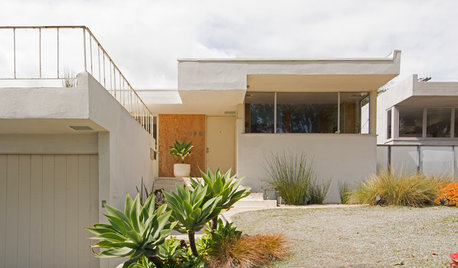

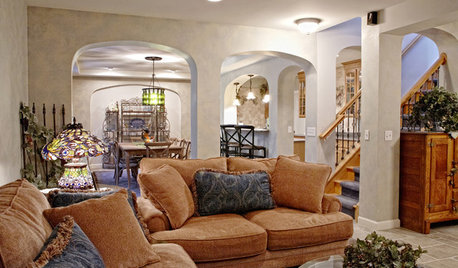
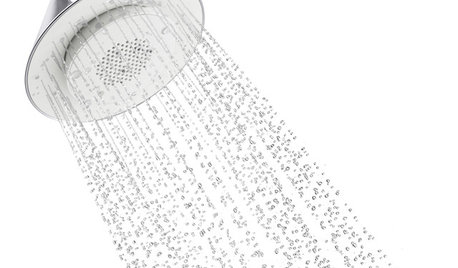
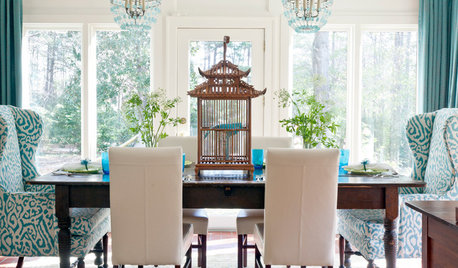


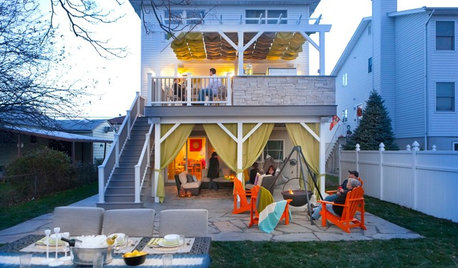
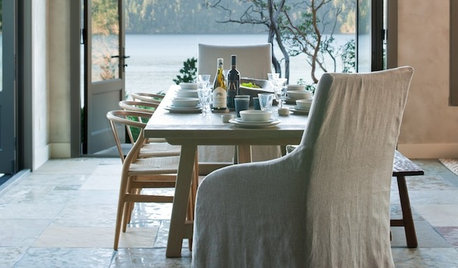






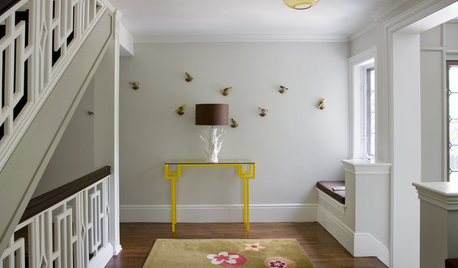

timberframe4us